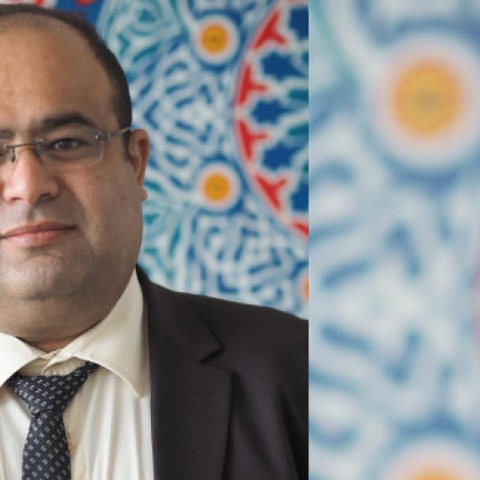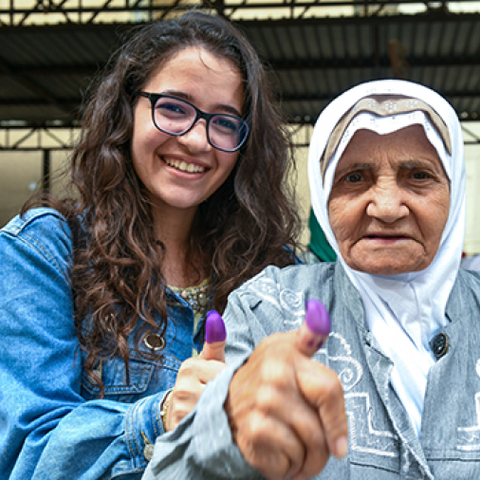Socioeconomic Roots and Impacts of the Crisis in Syria
This article is substantially based on SCPR reports: Socioeconomic roots and impact of the Syrian Crisis 2013, Confronting Fragmentation 2016, and Social Degradation 2017.
Before the crisis, Syrian institutions were unable to evolve in a way to reflect the aspirations, interests and expectations of the society. This “institutional bottlenecks” had hindered the country’s development record, marginalized large segments of society, and deprived them from effectively contributing to development. Thus, the social movement in Syria in 2011 has undoubtedly been political “par excellence”. It has right from the beginning, upheld and consistently adhered to the value of freedom, dignity, and social justice demanded by most parties in different forms and organizations. It has come as an expression of the essence of the crisis that is marked by denial of political freedoms, exclusion and oppression, and lack of efficient, transparent, and representative institutions.
However, the social movement in Syria was driven to armed confrontation by the level of brutal violence used by the regime, and by the increasing level of regional and international interventions and supports to different military groups. Consequently, the squandering of consciousness and status of the human being that was practiced before the crisis has increased manifold, even to the level of eradication of the human being’s right to live. The subjugating powers that adopt violence to dominate and oppress society, have taken advantage of the state of violence to instill a culture of fear, terror, polarization and submission. They have mobilized local economic resources to fuel the machinery of violence, where they have been deployed as incentives to feed the conflict and economies of violence.
These powers have succeeded in recruiting many individuals to become part of the machinery of killing, looting, and pillage by influencing their consciousness and using financial, social and political incentives. This could not have been sustained without substantive external support to conflict parties, many international and regional actors have fuelled the crisis through providing political, military, logistic, and financial support for the warring parties, in addition to invest in identity politics to deepen polarization and strengthening hostility and spirit of revenge of their local affiliates. On the other hand, the international system political and humanitarian support for the Syrian people and civil society was so humble, reflecting a new catastrophic failure of in terms of maintaining the basic human rights of people.
The impact of the crisis has been quite devastating, and the country is rapidly losing its human, physical, financial, social, and natural assets and potential. Total economic loss is equivalent to about five times of Syria’s 2010 GDP in constant prices. The economy lost its sovereignty, and the violence-centered economy diverted national income and wealth redistribution for the benefit of internal and external subjugating powers and rent seeking actors. The deteriorated economy puts about 85% of the Syrians under the poverty line, and suffering from multidimensional deprivation and not just the money metric one.
The crisis has changed enormously the population mapping in Syria where half of the population was forced to leave their homes and become IDPs, refugees, and migrants. But, the rate of loss of lives due to the conflict remains the most catastrophic visible and direct impact of the ongoing crisis in Syria. By the end of 2015, about 11.5% of the population inside Syria were killed, injured or maimed due to the armed-conflict. This has accompanied with huge deterioration in the health services that, in many cases, were used by the fighting parties as a weapon to impose their conditions and dominate people.
Human capital is also affected by the enormous difficulties facing the educational sector in Syria. The crisis leaves half of school-age children out of schools, and the educational system has lost stewardship and become fragmented with different curricula that are serving the ideologies of the different fighting parties. The educational collapse shall have a dramatic impact on the future of the country in terms of human capital, identity, and belongingness.
The social capital in Syria during the crisis has undergone a great deterioration, as manifested in the disintegration of social bonds and networks due to high levels of polarization and the spread of various types of religious, sectarian, national, ethnic, and ideological fanaticism. Social trust has decreased on several levels: the trust between individuals, the general sense of security, the collapse of trust in institutions. The conflict caused huge differences between individuals and communities regarding shared values and visions of the future, at both local and national levels.
Many internal and external actors have involved in the Syrian crisis to achieve political and economic interests which are in most cases against the Syrians’ needs and aspirations. These actors, who are directly responsible of the Syrian catastrophe, are negotiating the “peace” agreement to be imposed on Syrian people and paving the way for warlords to reconstruct the country based on their interests. Thus, there is a need for Syrians to format a national vision and strategy that overcome the conflict impact and dismantle its roots. This includes the addressing of internal political tyranny and oppression, external hegemony, and entailing the consideration of the Syrian people as equal citizens, being themselves the major players in the future of Syria to end the crisis, after being marginalized by the subjugating powers. The confrontation also requires working on a new development model that acknowledges and challenges oppression and exclusion that the Syrian population has been enduring for so long.



